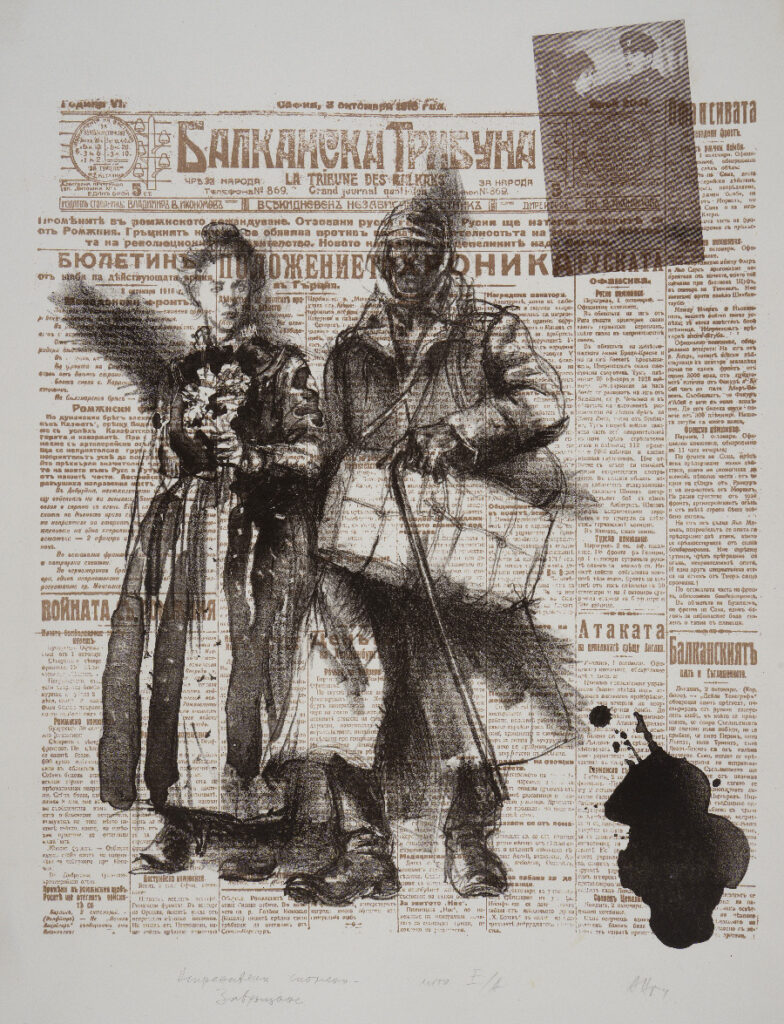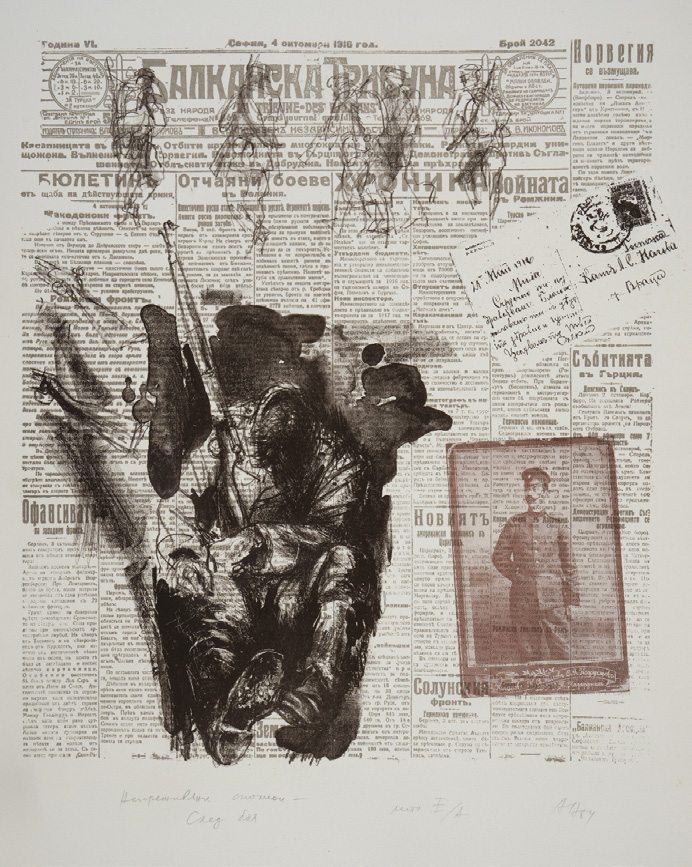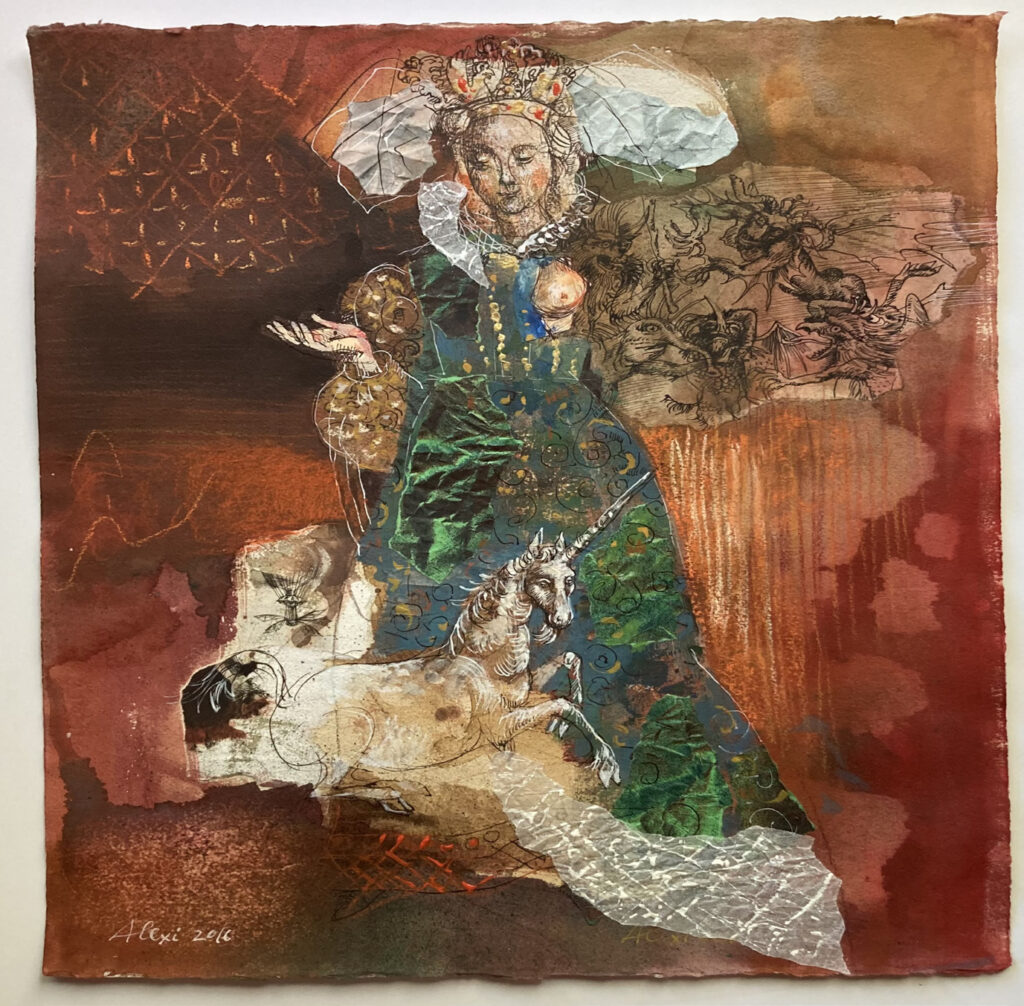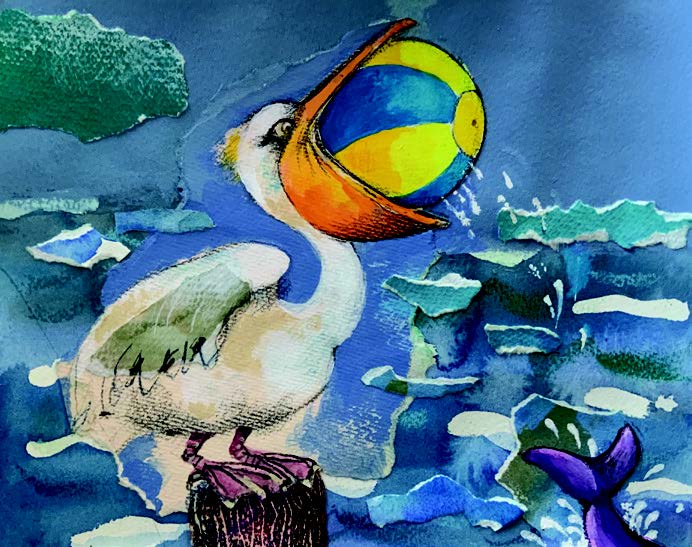Hope and Memory have one daughter and her name is Art.
William Butler Yeats, 1902


The art of Alexi Natchev transports us through time and space. It introduces us to bereft victims of war’s violence, an enigmatic woman in historic regalia, or a playful bird in a windswept sea, and reflects upon the past or expresses joy in the present. His spectrum of media encompasses painting, drawing, and complex print processes. But his wide-ranging images demonstrate more than visual imagination and technical skill. In each, he delves into the human condition, exploring emotions and states of mind.
Born and educated in Sofia, Bulgaria, Natchev graduated from the National Academy of Fine Arts there, and later became a professor in its Drawing Department. Since coming to the US in 1990, he has illustrated 22 children’s books with major American publishers. He has won several national and international awards and taught at Savannah College of Art and Design, University of the Arts in Philadelphia, and Maryland Institute College of Art in Baltimore. From 2007 to 2018, he was Illustration Area Coordinator at Delaware College of Art and Design in Wilmington, Delaware. His work is held in the National Art Gallery in Sofia, several city museums in Bulgaria, the Rare Book Collection at Princeton Library, and the Delaware Art Museum, as well as numerous private collections.
Natchev’s family memories of World War I inspired his Remembrance prints. In the first, on the front page of a contemporaneous newspaper, we see a photo inset that highlights the faces of his grandmother and uniformed grandfather. Superimposed over the text are images of his grandmother holding a welcoming bouquet of flowers, and gazing uncertainly toward her husband upon his return from the battlefield. Burdened by a cane, battered by injury and exhaustion, and carrying his strung-together possessions, the conscript trudges ahead. There is an exploding black blotch in the lower right corner, which suggests blood, or a bursting shell.
In the second Remembrance, we again have the photo inset of a soldier and the image of an isolated fighter slumped in cave-like darkness. Ghostly combatants line up with military precision across the top of the front page and fragmented guns hover at the left. Natchev’s grandfather wrote the postcard to his pregnant wife from the battlefront with a message of calm reassurance. The faces of the couple and the forlorn soldier are shadowed but not distorted, making their tragedy even more affecting. These survivors become every soldier and civilian unable to escape terror and starvation in the chaos of war, and more real than photographs from safer times.
In the Remembrance series, Natchev’s multi-step process of drawing, printing, and photography enhances complex relationships of time, space, words, and images. Newspaper text is both background and foreground, filtering through and receding from the transparent figures. The seated soldier’s feet and the walking soldier’s cane and boots thrust into our space. The asymmetric and tilted portraits and postcard suggest the dream-like disorder of memory itself. While the expressive black smudges and inky areas near the three figures intensify an atmosphere of foreboding, they also make the prints seem like salvaged artefacts instead of contemporary works of art. Yet all the figures could be war victims of today.

In Tarot Card II, Natchev interprets historical memories. The Tarot (its etymology is uncertain) began in 15th century Italy as a deck of playing cards; it was not associated with fortune-telling until the 18th century. Artists commissioned by wealthy patrons painted pasteboard cards of about 6″x4″ with royal and allegorical figures in elaborate period garments, and embellished by tooled, gilt backgrounds. To this influence, Natchev also brings an immersion in the “richly decorated pages of illuminated manuscripts, the world of fantastic creatures, mythical hybrids, and sea monsters, and the shimmering colors of the Unicorn Tapestries.”
Tarot Card II also makes clear his observation that the medieval visual imagination is “very close to modern sensibility.” A richly dressed and crowned woman gestures among swirls of gem-like color, abstract shapes, and decorative patterns, accompanied by a cloud of dragons and a unicorn. Although the imagery may allude to the medieval legend that only a young virgin could tame a unicorn—a folktale present in Christian and secular traditions—the scene conjures up a mysterious mood rather than a narrative. Natchev invites viewers to create their own stories as they not only “sense the distant past but also discover new beauty and meanings.”
Recently Natchev created a wordless picture book for his young granddaughters. In A Day at the Beach, a little girl about five years old sits with a multi-colored umbrella and quilt in the bright yellow early morning sun with a beach ball on the sand next to her. She tosses the ball into the air and watches as it is blown out beyond her reach. Dejected, under darkening skies and increasing wind, she loses sight of the ball and struggles with her umbrella.

We follow the ball into a storm, where a playful dolphin bounces it to a perched pelican, who takes flight and drops it back to the amazed and delighted child. We see her shadow waving as the kindly pelican flies off over the becalmed sea. Natchev’s watercolor and collage enrich each page with subtle and brilliant gradations of sunlight, beach, sky, and water as the day’s weather changes. The girl’s face and actions (and the animals’) exhibit a range of emotions. The book is a science lesson wrapped in a story of adventure, joy, and gratitude.
While Natchev’s Remembrances honor his grandparents’ memory, with A Day at the Beach, he has created a memory for two little girls—named Celeste and Marina after the sky and the sea—to take into the future. Today they enjoy an entrancing and light-hearted tale. Later they will remember and treasure the gift from a loving grandfather, an artist who knows—like Alice in Wonderland—that “it’s a poor sort of memory that only works backward.” G&S
© Mary F. Holahan 2023





Leave a Comment